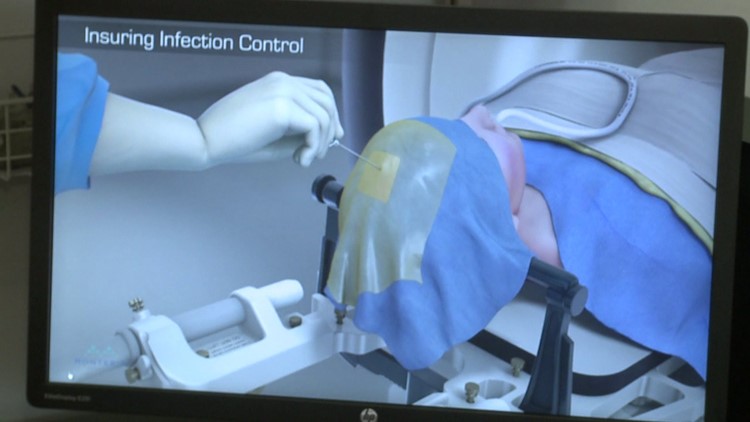HARVEYS LAKE -- There's a type of brain tumor called a glioblastoma. It grows rapidly. It's aggressive, and there are only a few options out there to treat it.
But a doctor at Geisinger Wyoming Valley Medical Center in Luzerne County says he can now use something he calls a game changer when it comes to this particularly deadly tumor.
Monika Pfeiffer is proud of her beautiful flower garden, and she should be. We took a walk around her scenic yard at Harveys Lake.
That she's able to walk at all is notable. Last June, Monika, 55, was diagnosed with a glioblastoma, the most malignant form of a brain tumor. With no cure and just months later, she was having trouble speaking and was already in a wheelchair.
"I couldn't walk or anything. I couldn't lift myself up," Monika recalled. "I was ready. I told the Lord to take me home because I don't want to go through this. Then Lacroix saved me."
Dr. Michel Lacroix is a neurosurgeon and director of neurosurgery at Geisinger Northeast.
With a glioblastoma, he says, the best you can do is to minimize a patient's discomfort and try to control the progression of the disease.
"At the time we saw her, she was rapidly debilitating, and we were short on alternatives," said Dr. Lacroix.
Monika wasn't responding to chemotherapy or radiation, and surgery wasn't an option because of the tumor's location.
So Dr. Lacroix turned to a new, and what he calls an extraordinary way, to treat a tumor -- a procedure called laser ablation, in this case, a system called neuroblate made by Monteris Medical.
He showed us the company's graphic step by step of how it works.
A tiny needle is inserted into the head, giving him a direct path to the tumor. A pinpoint laser beam is then aimed at a specific trajectory and burns it away.
Monika Pfeiffer was the first patient on which laser ablation was used at Geisinger.
"As a physician, when presented with an alternative that didn't exist that can help people, that's the best part of the evolution of these treatments," said Dr. Lacroix.
And Dr. Lacroix says images from Monika's scans tell the story.
"Right now, that tumor that would look three times the size right now has stopped growing completely."
Monika won't ever be cured, but she can be at home, enjoying time with her grandchildren and walking around her prized flowers.
The procedure is done in the OR under anesthesia, but it's considered minimally invasive.
Monika was home the very next day.



